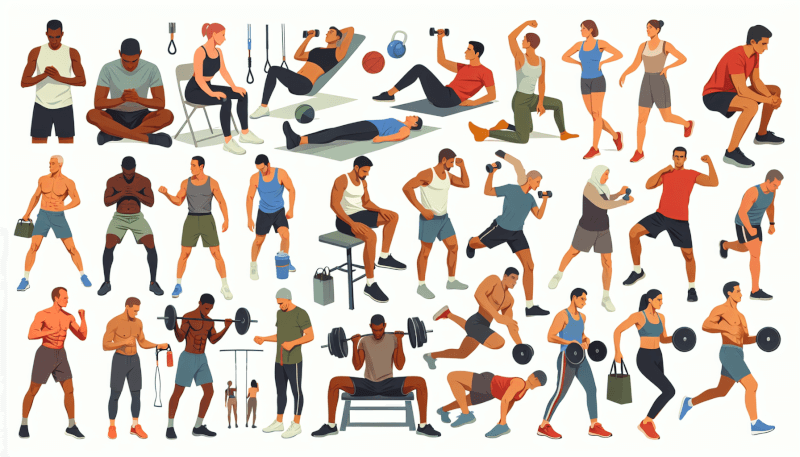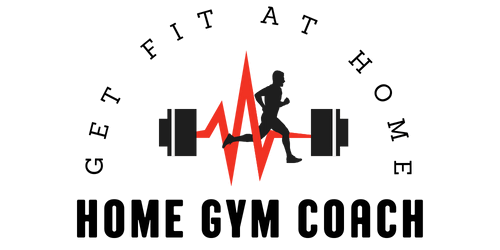Are you tired of dealing with muscular tension and discomfort? Look no further! In this article, we will discuss the benefits of custom workout plans specifically designed to alleviate muscular tension. Whether you’re a fitness enthusiast or a beginner looking to start your fitness journey, these customized workout plans will help you target and relieve tension in your muscles, leaving you feeling rejuvenated and pain-free. Say goodbye to those nagging aches and pains and hello to a stronger, more relaxed you!

Understanding Muscular Tension
Muscular tension is a common issue that many people experience, often resulting from stress, poor posture, repetitive movements, or muscular imbalances. Understanding the causes and effects of muscular tension is important in order to effectively alleviate and prevent it.
Causes of Muscular Tension
There are several factors that can contribute to muscular tension. One of the main causes is stress. When you are stressed, your body goes into a “fight or flight” response, causing your muscles to tense up. This prolonged muscle tension can lead to discomfort and pain.
Another common cause of muscular tension is poor posture. Sitting or standing for long periods with improper alignment can put strain on certain muscles, leading to tension and tightness. Additionally, repetitive movements or activities that require you to hold certain positions for extended periods of time can also contribute to muscular tension.
Muscular imbalances can also play a role in the development of muscular tension. When certain muscles become stronger than their opposing muscles, it can cause an imbalance and lead to tension in the weaker muscles.
Effects of Muscular Tension
Muscular tension can have various effects on the body. One of the most noticeable effects is discomfort or pain in the affected muscles. This can range from mild tightness to severe pain, depending on the extent of the tension.
Muscular tension can also limit your range of motion and flexibility. Tight muscles can make it difficult to perform certain movements and activities, leading to decreased physical performance and increased risk of injury.
Another effect of muscular tension is increased fatigue. When your muscles are constantly tense, they are working harder than they need to be, causing them to fatigue more quickly. This can make it challenging to engage in physical activities or even complete daily tasks without feeling tired.
Importance of Alleviating Muscular Tension
Alleviating muscular tension is crucial to maintaining overall muscle health and preventing further issues. By addressing the underlying causes of muscular tension and implementing effective strategies to alleviate it, you can experience improved comfort, flexibility, and physical performance.
Assessing Muscular Tension
Before you can effectively alleviate muscular tension, it’s important to accurately identify and assess the areas of tension in your body. This will help you tailor your workout plan to target the specific muscle groups that require attention.
Identifying Muscular Tension
To identify muscular tension, pay attention to any areas of discomfort, pain, or tightness in your body. Common areas that may experience tension include the neck and shoulders, upper back and chest, lower back and hips, legs and calves, and arms and wrists.
You can also try performing simple mobility tests to assess your range of motion and identify any restrictions or limitations caused by muscular tension. If certain movements feel restricted or painful, it may indicate the presence of tension in the muscles involved.
Seeking Professional Help
If you’re unsure about how to identify and assess muscular tension on your own, it can be beneficial to seek professional help. Physical therapists and other healthcare professionals can perform evaluations and provide guidance on alleviating muscular tension through targeted exercises and treatments.
Customizing Your Workout Plan
Once you have assessed your muscular tension, you can begin customizing a workout plan specifically designed to alleviate it. Customization is important because everyone’s body is different, and what works for one person may not work for another.
Setting Goals for Alleviating Muscular Tension
Before diving into your workout plan, it’s important to establish clear goals for alleviating muscular tension. These goals can help guide your efforts and keep you motivated throughout the process. Whether your goal is to reduce pain, improve flexibility, or enhance overall muscle balance, setting specific and achievable objectives will help keep you on track.
Choosing the Right Exercises
When selecting exercises for your workout plan, it’s important to focus on movements that target the specific muscles experiencing tension. Incorporating a variety of exercises that address flexibility, strength, and mobility will provide a well-rounded approach to alleviating muscular tension.
For example, if you experience tension in your neck and shoulders, incorporating exercises that stretch and strengthen these muscles, such as shoulder rolls and neck stretches, can be beneficial. Likewise, if you have tension in your lower back and hips, exercises like hip flexor stretches and glute bridges can help alleviate the discomfort.
Designing an Effective Schedule
In addition to selecting the right exercises, designing an effective schedule will also contribute to the success of your workout plan. Consistency is key when it comes to alleviating muscular tension, so it’s important to establish a regular routine that works for you.
Consider factors such as the time of day that you feel most energized, the length of each workout session, and how many days per week you are able to dedicate to your plan. Aim for a schedule that is sustainable and realistic for your lifestyle, ensuring that you can commit to it long-term.

Exercise Techniques to Alleviate Muscular Tension
Incorporating specific exercise techniques into your workout plan can further enhance your efforts to alleviate muscular tension. These techniques focus on stretching, promoting relaxation, and creating balance within your muscles.
Dynamic Stretching
Dynamic stretching involves moving the joints and muscles through a full range of motion in a controlled and deliberate manner. This technique helps to warm up the muscles, increase blood flow, and improve flexibility. Including dynamic stretches in your warm-up routine can help prepare your muscles for the upcoming workout and alleviate tension.
Examples of dynamic stretches include leg swings, arm circles, and walking lunges. These exercises promote mobility and stretch the muscles in a dynamic and fluid manner.
Foam Rolling
Foam rolling, also known as self-myofascial release, is a technique that uses a foam roller to target and release tension in the muscles. By applying gentle pressure and rolling the foam roller over tight areas, you can help break up muscle knots and trigger points, promoting relaxation and relieving tension.
Foam rolling can be particularly effective for alleviating muscular tension in larger muscle groups such as the quadriceps, hamstrings, and glutes. Take your time when foam rolling and focus on areas that feel tight or tender. Remember to breathe deeply and relax into the pressure.
Yoga and Pilates
Yoga and Pilates are both effective exercise techniques for alleviating muscular tension. These practices focus on controlled movements, mindful breathing, and gentle stretching to promote relaxation and improve flexibility.
Yoga poses such as downward dog, child’s pose, and cat-cow can help release tension in the back and shoulders. Pilates exercises such as the bridge and the hundred can target the core and lower body, encouraging strength and stability while simultaneously releasing tension.
Strength Training
Strength training is an essential component of any workout plan aimed at alleviating muscular tension. By strengthening the muscles surrounding the areas of tension, you can help improve overall muscle balance and reduce strain.
When incorporating strength training into your routine, focus on exercises that target both the agonist (primary) and antagonist (opposing) muscles. For example, if you have tension in your neck and shoulders, exercises such as shoulder presses for the deltoids and rows for the upper back can be beneficial.
Cardiovascular Exercise
Cardiovascular exercise, such as walking, running, or cycling, can also contribute to alleviating muscular tension. Engaging in aerobic activity increases blood flow and oxygen delivery to the muscles, promoting relaxation and reducing tension.
Choose cardiovascular exercises that you enjoy and that are low-impact to minimize strain on the muscles. Aim for at least 150 minutes of moderate-intensity cardiovascular exercise per week, or 75 minutes of vigorous-intensity exercise, to reap the benefits of tension reduction.
Incorporating Recovery, Rest, and Self-Care
In addition to your workout plan, it’s important to prioritize recovery, rest, and self-care practices to further alleviate muscular tension. These practices help to reduce inflammation, promote healing, and restore balance to the muscles.
Importance of Recovery and Rest
Recovery and rest are essential for allowing your muscles to repair and rebuild. When you engage in physical activity, microscopic damage occurs in your muscle fibers. Resting gives your body time to repair this damage and adapt to the stress.
Incorporate rest days into your workout schedule to allow your muscles time to recover. Additionally, prioritize quality sleep, as it is during sleep that your body undergoes the majority of its repair and restoration processes.
Effective Self-Care Practices
Self-care practices can greatly contribute to the alleviation of muscular tension. Some effective self-care techniques include:
- Massage: Regular massages can help release tension and promote muscle relaxation.
- Heat and Cold Therapy: Applying heat or cold therapy to the affected areas can help reduce inflammation and soothe sore muscles.
- Stress Reduction: Incorporating stress reduction techniques such as meditation, deep breathing exercises, or engaging in hobbies can help alleviate overall tension.
Making time for self-care practices not only benefits your muscles but also contributes to your overall well-being and mental health. Prioritize self-care activities that make you feel relaxed, rejuvenated, and balanced.

Nutrition and Hydration for Alleviating Muscular Tension
Proper nutrition and hydration play a vital role in alleviating muscular tension. By fueling your body with the right nutrients and maintaining adequate hydration, you can support muscle recovery and reduce the risk of tension buildup.
Optimal Nutrition for Muscle Health
To support muscle health and alleviate tension, focus on consuming a well-balanced diet that includes lean proteins, complex carbohydrates, and healthy fats. Protein is especially important for muscle growth and repair, so aim to include sources such as lean meats, fish, eggs, and plant-based proteins in your meals.
Additionally, include plenty of fruits and vegetables in your diet to provide essential vitamins, minerals, and antioxidants that aid in muscle recovery. Foods rich in omega-3 fatty acids, such as fatty fish, walnuts, and flaxseeds, can help reduce inflammation and promote muscle health.
Hydration and its Role in Alleviating Muscular Tension
Staying properly hydrated is crucial for muscle function and tension reduction. Water helps transport essential nutrients to your muscles and flushes out metabolic waste products that can contribute to tension buildup.
Aim to drink at least 8 cups (64 ounces) of water per day, or more if you engage in intense physical activity. You can also include hydrating foods in your diet, such as cucumbers, watermelon, and citrus fruits, which have high water content.
Remember to listen to your body’s thirst cues and drink water throughout the day to maintain optimal hydration levels. Well-hydrated muscles are less likely to experience tension and tightness.
Seeking Professional Assistance
In some cases, seeking professional assistance can be beneficial in effectively alleviating muscular tension. Physical therapists, massage therapists, and chiropractors are trained professionals who can provide targeted treatments and therapies to address muscular tension.
Physical Therapy
Physical therapy is a specialized form of treatment that focuses on relieving pain and improving physical function through various exercises, manual therapy techniques, and modalities. A physical therapist can assess your muscular tension, identify underlying causes, and provide a personalized treatment plan to address your specific needs.
Massage Therapy
Massage therapy is a hands-on therapy that involves manipulating the muscles, tendons, and soft tissues to promote relaxation and relieve tension. A skilled massage therapist can apply different techniques to target specific areas of tension, helping to release tight muscles and improve circulation.
Regular massage therapy sessions can greatly contribute to the alleviation of muscular tension and overall muscle health. Discuss your specific concerns with a qualified massage therapist and work together to develop a treatment plan that meets your individual needs.
Chiropractic Care
Chiropractic care focuses on the diagnosis and treatment of musculoskeletal disorders, including muscular tension. A chiropractor will assess your posture, spinal alignment, and overall musculoskeletal health, and provide adjustments or manipulations to correct any imbalances or misalignments that may be contributing to tension.
Chiropractic care can be particularly effective for relieving tension in the spine, neck, and joints. Consider consulting with a chiropractor to discuss your symptoms and explore whether chiropractic care may be a suitable treatment option for your muscular tension.

Preventing Muscular Tension
While it’s important to alleviate existing muscular tension, it’s equally important to prevent it from occurring in the first place. By incorporating proper posture and ergonomics into your daily life and maintaining a regular stretching and exercise routine, you can mitigate the risk of muscular tension.
Proper Posture and Ergonomics
Maintaining proper posture is crucial for preventing muscular tension. Whether sitting at a desk, standing, or engaging in physical activities, focusing on ergonomics and alignment will reduce strain on the muscles and joints.
When sitting, keep your feet flat on the floor, your back straight, and your shoulders relaxed. Ensure that your screen, chair, and desk are at appropriate heights to support good posture. When standing, distribute your weight evenly on both feet, and avoid slouching or leaning for extended periods.
During physical activities, pay attention to your body alignment and engage in proper form. Whether lifting weights, running, or participating in sports, maintaining good posture and using proper technique will help reduce the risk of developing muscular tension.
Regular Stretching and Exercise Routine
Incorporating regular stretching and exercise into your routine is a key preventative measure for muscular tension. By engaging in activities that promote flexibility, strength, and balance, you can keep your muscles healthy and supple.
Incorporate dynamic stretches into your warm-up routine before exercise sessions to prepare your muscles for activity and reduce the risk of tension buildup. Follow up with static stretches after workouts to improve flexibility and prevent muscle tightness.
Additionally, ensuring that you have a well-rounded exercise routine that includes strength training, cardiovascular exercise, and mobility exercises will help maintain overall muscle balance and reduce the risk of excessive tension in specific muscle groups.
Exercises for Specific Muscle Groups
To effectively alleviate muscular tension in specific muscle groups, it’s important to target those areas with appropriate exercises. Here are some exercises that can help alleviate tension in common muscle groups:
Neck and Shoulders
- Neck stretches: Gently tilt your head to the side, bringing your ear towards your shoulder. Hold for several seconds and repeat on the other side.
- Shoulder rolls: Roll your shoulders forward in a circular motion, then roll them backward.
Upper Back and Chest
- Cat-cow stretch: Begin on all fours with a neutral spine. Inhale, arch your back and lift your chest towards the ceiling (cow), then exhale as you round your back and tuck your chin to your chest (cat).
- Doorway stretch: Stand in a doorway with your arms bent at 90-degree angles, palms facing forward. Place your forearms on the door frame and gently lean forward to stretch the chest and shoulders.
Lower Back and Hips
- Child’s pose: Start on all fours and sit your hips back towards your heels, extending your arms forward. Relax your forehead on the mat and breathe deeply.
- Glute bridge: Lie on your back with your knees bent and feet flat on the floor. Lift your hips off the ground, squeezing your glutes, and hold for a few seconds before lowering back down.
Legs and Calves
- Hamstring stretch: Sit on the floor with one leg extended in front of you and the other bent with the sole of your foot against your inner thigh. Reach forward with your arms, aiming to touch your toes while maintaining a straight back.
- Calf raises: Stand with your feet hip-width apart, then rise up onto your tiptoes. Lower back down and repeat.
Arms and Wrists
- Wrist stretches: Extend your arm in front of you and gently bend your wrist down, then pull your fingers back towards your body.
- Tricep stretch: Extend one arm overhead and bend your elbow, placing your hand on the upper-middle of your back. Gently push your elbow back with your opposite hand to deepen the stretch.
Remember to listen to your body and modify these exercises as needed. Start with gentle stretches and gradually increase intensity as your muscles become more flexible.

Tracking Progress
Keeping track of your progress is essential for staying motivated and making adjustments to your workout plan as needed. By monitoring your progress, you can identify areas of improvement and make informed decisions to optimize your results.
Keeping a Workout Journal
A workout journal is a valuable tool for tracking your exercises, sets, repetitions, and any changes in technique or intensity. This allows you to see how you’ve progressed over time and helps you identify which exercises are most effective for alleviating muscular tension.
Record your workouts, including the exercises performed, the number of sets and repetitions, and any notes or observations about how you felt during or after the workout. Reviewing your journal periodically can provide valuable insights and help you make informed decisions about modifying your plan.
Monitoring and Modifying Your Plan
Regularly assessing your progress and monitoring how your body responds to your workout plan is important for optimizing results. If you notice that certain exercises are not effectively alleviating muscular tension or causing discomfort, it may be necessary to modify your plan accordingly.
Be open to making adjustments and experimenting with different exercises, intensities, or techniques. Remember that everyone’s body is unique, and what works for others may not work for you. Pay attention to your body’s feedback and adapt your plan to ensure that it continues to meet your goals and alleviate muscular tension effectively.
In conclusion, understanding and alleviating muscular tension requires a comprehensive approach that combines targeted exercises, proper nutrition, hydration, and self-care practices. By customizing your workout plan, seeking professional assistance when needed, adopting preventative measures, and monitoring your progress, you can successfully alleviate muscular tension and enjoy improved muscle health and overall well-being. Remember to listen to your body, prioritize rest and recovery, and consult with healthcare professionals as necessary to ensure a safe and effective journey toward alleviating muscular tension.


